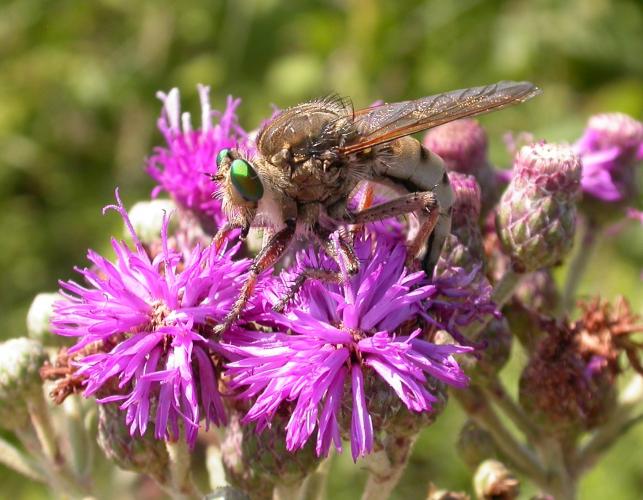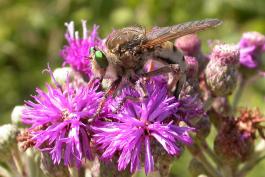
The green robber fly is a large robber fly with distinctive tiger stripes on the abdomen. The eyes are beautiful iridescent green, sometimes with a reddish or coppery cast. When it's flying around, it buzzes noisily and is intimidating.
As with other robber flies, this species can inflict a painful bite if mishandled.
This is one of more than 20 similar-looking species of robber flies in genus Promachus (PROM-uh-kuss), all called giant robber flies or bee killers, that occur in North America north of Mexico.
Learn more about this and other robber flies on their group page.
Length: ¾–1½ inches
Habitat and Conservation
Robber flies are aerial predators of a variety of insects. They often perch in conspicuous locations and make short flights chasing prey. This species of robber fly is usually seen in grasslands and other open areas where wildflowers attract a variety of insect prey.
Food
The green-eyed robber fly and other giant robber flies hunt relatively giant prey: bumble bees, carpenter bees, dragonflies, wasps, and so on.
Life Cycle
Mating pairs often fly around in the air, attached to one another, buzzing noisily. Females deposit eggs in flowerheads, usually of plants in the sunflower family, such as ironweeds, thistles, and so on. Larvae hatch and fall to the ground, where they burrow under the soil, eat grubs and other small invertebrates, and overwinter. In spring, they pupate, and by early summer, they become winged adults.

























